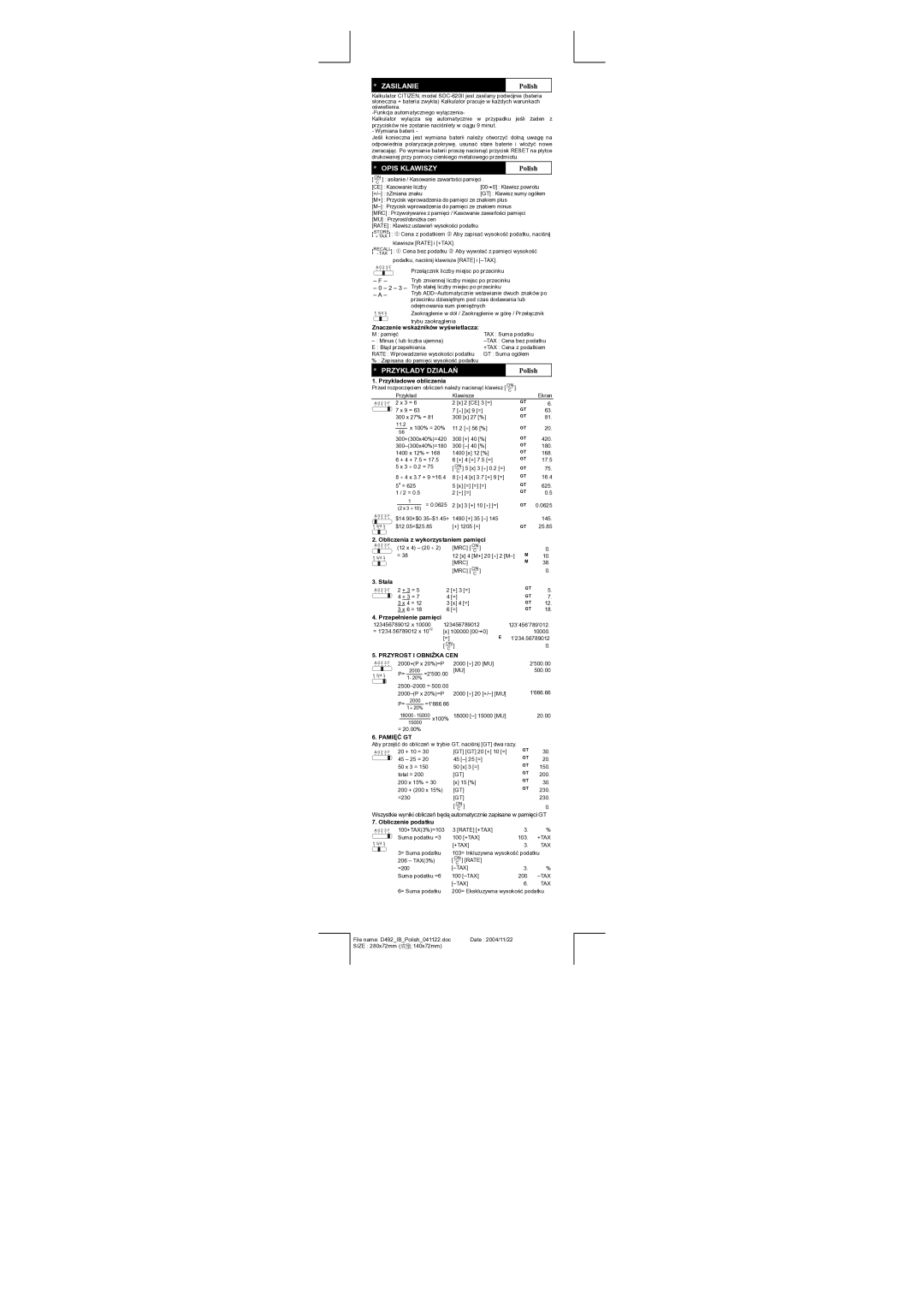SDC-620II, sdc-620II specifications
The Citizen Systems SDC-620II is a state-of-the-art thermal printer designed for a variety of demanding applications, particularly in the field of receipts, labels, and tickets. This device stands out due to its combination of advanced technologies, ergonomic design, and robust performance capabilities, making it an ideal choice for businesses looking to enhance their operational efficiency.At the heart of the SDC-620II is its high-speed printing technology, which achieves a remarkable print speed of up to 200 mm per second. This ensures that businesses can handle high-volume printing tasks with ease, reducing wait times at the point of sale and improving customer satisfaction. The printer supports a variety of paper widths, accommodating different printing needs and enabling versatility in print formats.
One of the key features of the SDC-620II is its high-resolution printing capability, which provides crisp and clear outputs at a resolution of 203 dpi. This allows for readable text and high-quality graphics, essential for creating professional-looking receipts or labels. Additionally, the printer is equipped with an auto-cutter option that ensures clean and precise cuts, further enhancing the overall printing experience.
The SDC-620II supports various interfaces, including USB, Ethernet, and Bluetooth, allowing seamless connectivity to a wide range of devices. This multi-connectivity feature makes it easy to integrate into existing systems or networks, providing flexibility for businesses that utilize different technology setups. Furthermore, it is compatible with multiple operating systems, including Windows and Android, ensuring that users can operate the printer without compatibility issues.
In terms of durability, the SDC-620II is constructed with high-quality materials that can withstand the rigors of daily use in busy environments. The printer is designed to have a long lifecycle, minimizing maintenance needs and providing peace of mind for business owners. The compact design also ensures that it can fit into tight spaces, a crucial consideration for retail and hospitality sectors where counter space is at a premium.
Energy efficiency is another important characteristic of the SDC-620II. It is designed to consume minimal power during operation, contributing to cost savings for businesses and a lower environmental impact. This focus on sustainability is becoming increasingly important in today's marketplace, making the printer an attractive option for eco-conscious companies.
In summary, the Citizen Systems SDC-620II combines speed, versatility, and durability in a compact design, making it a standout choice for businesses in need of reliable and high-quality thermal printing solutions. With its robust set of features and technologies, it effectively meets the challenges posed by modern printing demands, ensuring businesses can operate smoothly and efficiently.

